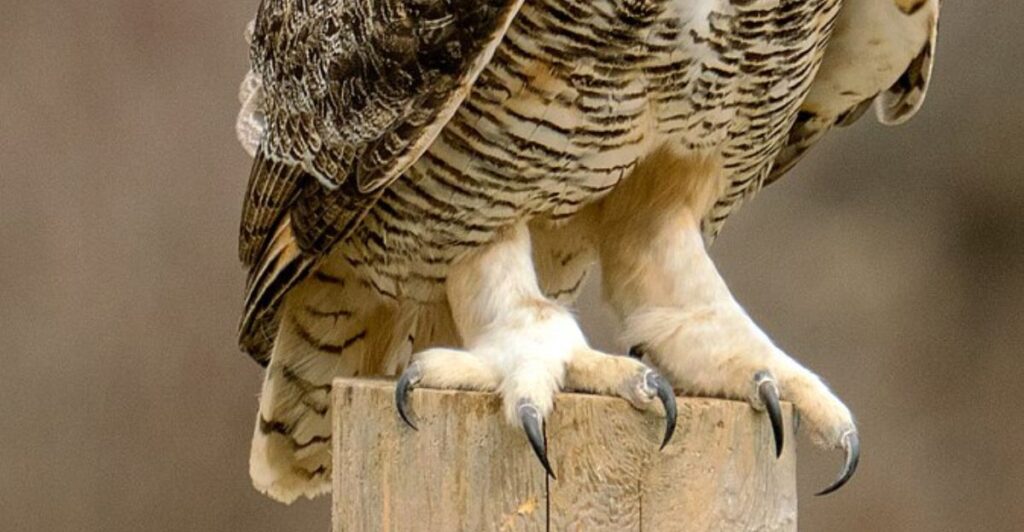
With wings like whispers and eyes that pierce the dark, owls are nature’s silent predators. Every trait they possess, from their keen hearing to their camouflage, is finely tuned for survival. Here are 12 extraordinary adaptations that make owls one of the most successful hunters in the wild.
1. Exceptional Night Vision

Owls possess an extraordinary ability to see in near-complete darkness, a skill that sets them apart from most other predators. This is due to large eyes packed with rod cells, which excel at gathering light. While human eyes would struggle in such conditions, owls have adapted to hunt efficiently throughout the night.
2. Silent Flight

Unlike many birds that create noticeable rustling sounds, owls fly silently due to specialized wing structures. In fact, their silent flight is so effective that prey is often unaware of the approaching predator until it’s too late. An owl’s flight can be nearly inaudible, even in still, quiet environments.
3. Powerful Hearing

The ear placement of owls allows them to detect sound from different heights and angles, enhancing their ability to pinpoint the location of prey, even if it’s hidden under the ground. This directional hearing allows owls to hunt by sound alone, which makes them highly efficient in low-light conditions where sight alone wouldn’t suffice.
4. Sharp Talons and Strong Grip

An owl’s talons are designed to grab and hold tightly, exerting a pressure that can exceed 500 pounds. Such gripping strength ensures that even larger prey, such as rabbits or squirrels, cannot escape once caught. The curved, razor-sharp talons help secure the animal quickly, and the owl’s grip locks into place, preventing escape.
5. Wide Field of View

Capable of turning their heads 270 degrees, they can scan the environment without moving their bodies. While the owl cannot move its eyes as humans do, its head rotation compensates for this, providing a wide range of vision. This ability is key to owls’ survival, which enables them to stay alert and aware at all times.
6. Adaptable Hunting

Owls’ ability to hunt a wide range of prey makes them formidable predators. They hunt a variety of prey, including mice, voles, birds, insects, and occasionally amphibians or reptiles, making use of whatever is available. This dietary versatility ensures their success as top nocturnal hunters.
7. Ultra-Fast Reaction Time

Owls possess lightning-fast reflexes, which allows them to strike with precision. When prey is detected, an owl can react almost instantly, adjusting its flight path or pouncing in a split second. This rapid response time ensures that even quick, agile prey has little chance of escape.
8. Specialized Beak for Efficient Feeding

An owl’s sharp, downward-curving beak is designed for tearing flesh with ease. Unlike many birds, their beak is positioned to stay out of the way when hunting, allowing them to strike quickly and precisely. This efficient design lets owls consume prey swiftly and minimizes feeding time.
9. Ability to Detect Movement

Owls possess an acute ability to detect even the slightest movements in the environment. Their eyes, highly attuned to detecting motion, can spot a small mouse scurrying across the ground or a bat flying through the air. Such heightened sensitivity to movement allows owls to hunt efficiently at night when visibility is low.
10. Adaptable to Various Habitats

Owls are incredibly adaptable and can thrive in a wide range of habitats. In some areas, owls have even adapted to living in proximity to human activity, where they play a very important role in controlling rodent populations. Being highly adaptable is key to their success as a species.
11. Camouflage Abilities

Imagine you’re wandering through a dark forest, and suddenly, you spot what looks like a twisted tree branch—until that branch blinks at you! That’s the magic of an owl’s camouflage. Their feathers blend so perfectly with the bark and leaves around them that they might as well be part of the tree itself.
12. Protective Eye Adaptations

Owls possess a translucent third eyelid, known as a nictitating membrane, which shields their eyes while still allowing them to see. This translucent layer shields their vision during flight and hunting, preventing debris or injury. It ensures that owls’ keen eyesight remains sharp, even in rough environments.
Stay connected with us for more stories like this! Follow us to get the latest updates or hit the Follow button at the top of this article, and let us know what you think by leaving your feedback below. We’d love to hear from you!







